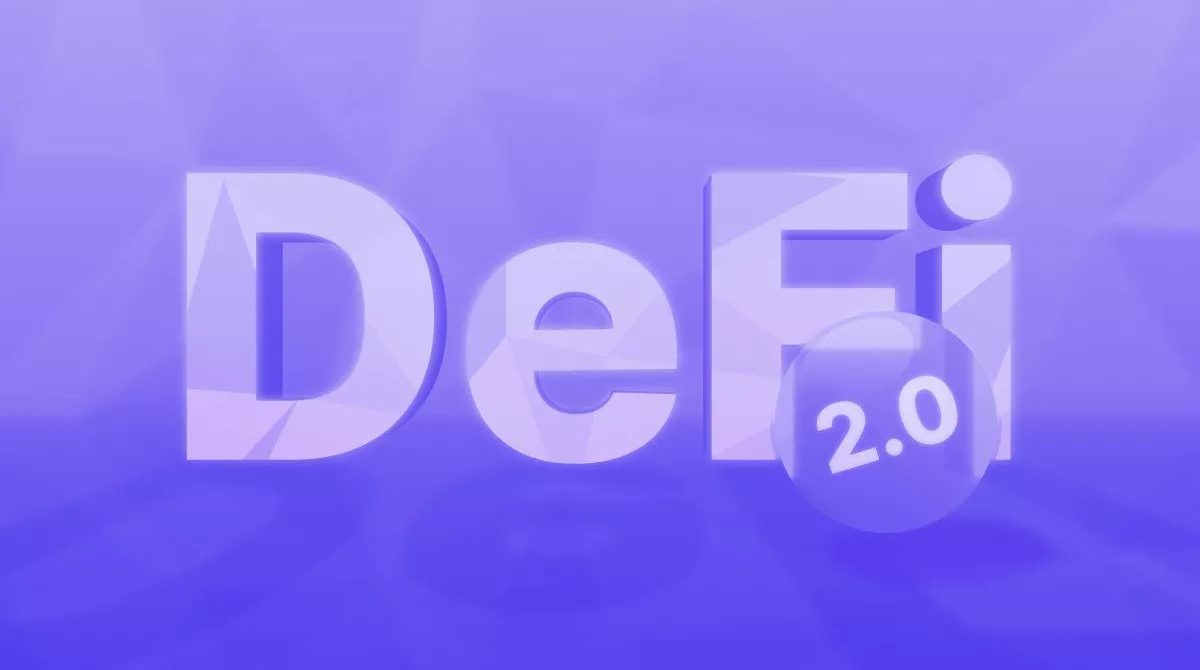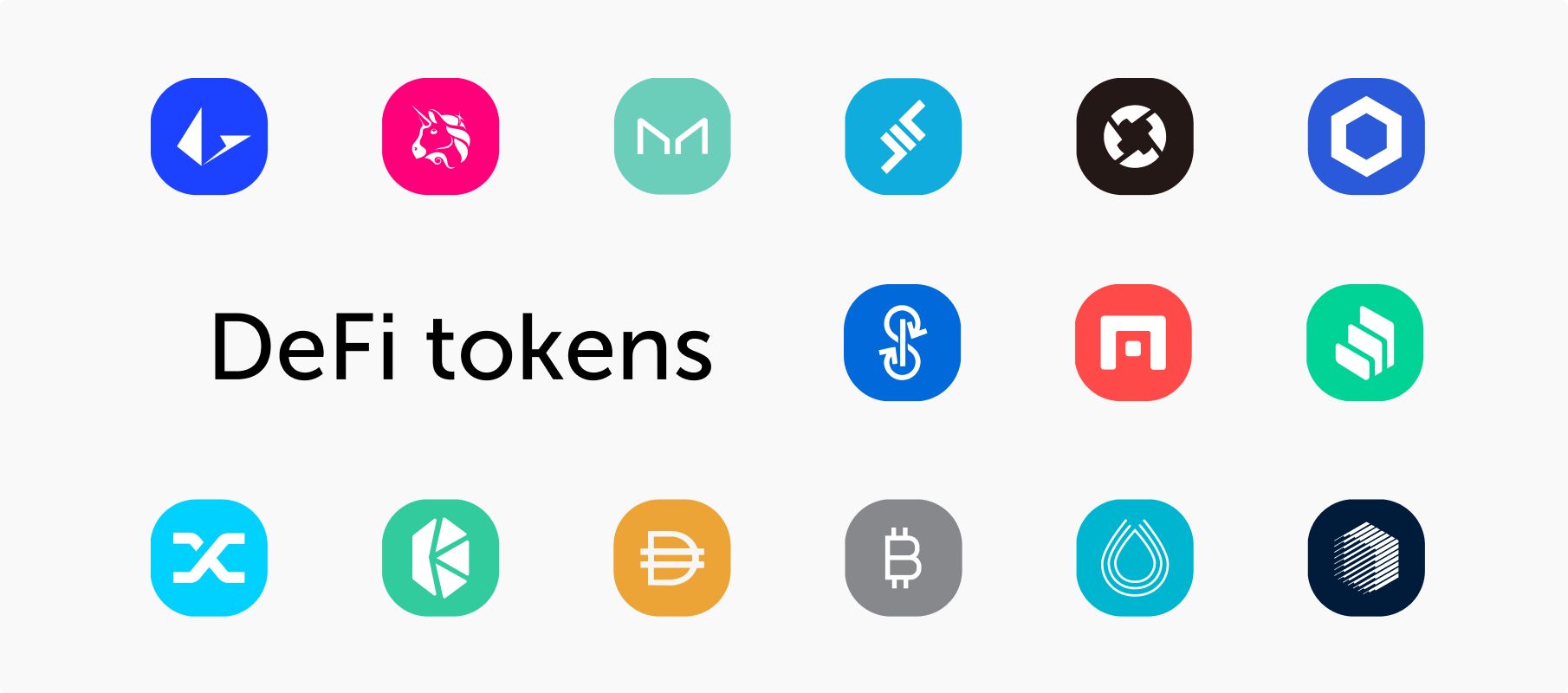Second Generation of DeFi Protocols: Exploring the Innovations of DeFi 2.0 and Its Impact on the Financial Landscape

In recent years, the financial landscape has undergone a profound transformation, driven by technological advancements and the pursuit of decentralization. This evolution has opened up new avenues for individuals to engage with financial services in ways that challenge traditional banking systems. As innovations emerge, they offer enhanced flexibility, increased accessibility, and novel opportunities for participation in economic activities.
Newly developed models in this space are not just iterative updates but rather signify a substantial leap forward. These advancements build upon existing frameworks while introducing mechanisms that allow for improved efficiency, security, and user control. The impact of these innovations extends to various financial instruments and services, creating an ecosystem that is more inclusive and diverse.
As we explore the key components and implications of this progressive shift, it becomes essential to grasp the underlying principles driving these changes. Understanding these new concepts empowers users to navigate the evolving landscape effectively, enabling them to make informed decisions and leverage the benefits that this transformation brings.
The Evolution of Decentralized Finance
The landscape of financial services has undergone a significant transformation, driven by technology and innovative concepts that challenge traditional banking systems. This shift empowers individuals with greater autonomy over their financial activities, enabling seamless transactions and enhanced accessibility. As a result, new frameworks emerge that utilize blockchain technology to enhance transparency, security, and efficiency in financial operations.

From Traditional Financial Systems to Innovative Solutions
Initially, the financial domain was dominated by centralized institutions that controlled user access and managed assets. However, the advent of blockchain and smart contracts has paved the way for a decentralized approach. This new paradigm permits users to engage directly with one another, eliminating intermediaries and reducing costs. Furthermore, the integration of automated protocols has led to innovative services that cater to a wide range of financial needs.
Key Advancements in Financial Technology
With advancements such as liquidity provision, yield farming, and decentralized exchanges, the financial ecosystem is witnessing unprecedented dynamism. These concepts allow participants to earn returns on their investments while maintaining control over their assets. Moreover, developments in governance models have empowered users to actively participate in decision-making processes, fostering a sense of community and shared responsibility.
In summary, the evolution of the financial landscape represents a profound shift towards a more inclusive, transparent, and efficient system that challenges and redefines longstanding practices, positioning the future of finance on a progressive trajectory.
Key Features of DeFi 2.0
The evolution of decentralized finance has given rise to a new wave of innovative solutions that enhance user experience, improve scalability, and foster greater efficiency. This next phase brings forth a set of attributes designed to address the shortcomings of earlier frameworks while capitalizing on the strengths of blockchain technology.
Enhanced Accessibility and Interoperability
One of the standout characteristics is the focus on making platforms more accessible to a broader audience. This includes the development of user-friendly interfaces and improved integration between different blockchain ecosystems, allowing for seamless transactions and interactions across various applications.
Increased Capital Efficiency
Another notable aspect is the emphasis on maximizing capital utilization. Through innovative mechanisms such as liquidity mining and yield farming, participants can achieve higher returns on their investments while engaging more actively in the ecosystem.
| Feature | Description |
|---|---|
| Accessibility | Improved user interfaces and reduced barriers to entry for new users. |
| Interoperability | Seamless integration between multiple blockchain networks, enhancing user experience. |
| Capital Efficiency | Mechanisms that allow for optimized returns on investment through liquidity incentives. |
| Governance Models | Decentralized governance structures that empower users to participate in decision-making processes. |
| Security Enhancements | Improved protocols to ensure the safety and integrity of transactions. |
New Protocols Shaping Financial Landscapes
The landscape of finance is undergoing a profound transformation, driven by innovative protocols that are reimagining the way individuals and institutions engage with monetary systems. These advancements aim to improve accessibility, efficiency, and transparency, ultimately creating a more inclusive financial environment for all participants.
Key Innovations in Financial Technologies
Several cutting-edge solutions are at the forefront of this change, each contributing uniquely to the evolving financial ecosystem. Notable innovations include:
- Smart Contracts: Automated agreements that execute transactions when predetermined conditions are met, removing the need for intermediaries.
- Liquidity Pools: Collective funds where users contribute assets, enabling seamless trading and earning rewards for providing liquidity.
- Governance Tokens: Digital tokens that grant holders decision-making power within a platform, enhancing community involvement in its future.
Impact on the Financial Ecosystem
The emergence of these new frameworks is not merely a technical improvement; it impacts economic structures, user behavior, and regulatory approaches. The benefits can be summarized as follows:
- Enhanced Access: Lower barriers to entry enable wider participation, particularly among underbanked populations.
- Increased Efficiency: Reduced transaction times and costs streamline processes traditionally bogged down by bureaucracy.
- Transparent Operations: Public ledgers and open-source technology foster trust and accountability within the system.

As these pioneering mechanisms continue to evolve, they will undoubtedly play a crucial role in shaping the future of global finance.
Benefits Over First Generation Solutions
The evolution of financial ecosystems has led to substantial improvements in usability, security, and efficiency. Newer frameworks offer a range of advantages that address the challenges faced by their predecessors, making them more appealing to users and developers alike.
- Enhanced User Experience: Modern platforms prioritize intuitive designs, facilitating easier navigation and interaction for a wider audience.
- Increased Security: Advanced security measures, such as enhanced smart contract auditing and robust mechanisms against hacks, significantly reduce risks associated with transactions.
- Improved Scalability: New architectures are designed to handle larger volumes of transactions, ensuring that performance remains consistent even during peak activity.
- Lower Costs: Streamlined processes and optimized resource management contribute to reduced fees for users, making participation more economical.
- Greater Interoperability: Advanced systems facilitate seamless integration with various platforms, enabling users to move assets across different ecosystems easily.
- Innovative Financial Products: The introduction of new tools and features, such as algorithmic stablecoins and yield farming, expands the opportunities for earning and investing.
- Community-Driven Governance: Decentralized decision-making structures empower users to have a direct say in the evolution of their chosen platforms, promoting transparency and trust.
These benefits collectively contribute to a more robust and accessible financial landscape, fostering higher participation rates and driving broader adoption among diverse user groups.
Emerging Trends in Decentralized Applications
The landscape of decentralized applications is rapidly evolving, witnessing a surge of innovative concepts that are shaping the future of digital finance and beyond. These advancements are increasingly appealing to users, offering new functionalities, improved user experiences, and enhanced security. As the ecosystem matures, several key trends are taking center stage, promoting a more robust and accessible framework for users and developers alike.
Integration of Layer 2 Solutions
One of the most notable trends is the integration of Layer 2 solutions that aim to enhance transaction throughput and scalability. By processing transactions off-chain, these layers help to alleviate network congestion and reduce gas fees, making applications more efficient and accessible to a larger audience. This development is crucial for fostering mass adoption and ensuring that applications can handle increased user demand without sacrificing performance.
Interoperability Across Platforms
Another prominent trend is the emphasis on interoperability, enabling different applications and blockchains to communicate seamlessly. This allows users to leverage various services and assets across multiple platforms, enhancing flexibility and encouraging collaboration among different ecosystems. As the focus on building bridges between networks grows, users can expect a more integrated experience, unlocking a broader range of functionalities and opportunities.
| Trend | Description |
|---|---|
| Layer 2 Solutions | Enhances scalability and reduces transaction costs. |
| Interoperability | Facilitates seamless communication between diverse ecosystems. |
| Enhanced Security Features | Implements advanced encryption and decentralized identity systems. |
| Tokenization of Real-World Assets | Enables fractional ownership and easier access to various investments. |
Challenges Facing DeFi 2.0 Adoption
The ascent of advanced financial ecosystems has been met with enthusiasm but is not without its struggles. As innovative projects emerge, they encounter various hurdles that impede wider acceptance among users and investors. Understanding these challenges is crucial for realizing the full potential of these transformative platforms.
- User Education: Many potential users lack familiarity with these novel financial systems, leading to confusion and skepticism. Comprehensive educational resources are essential to bridge this gap.
- Security Concerns: The history of exploits and vulnerabilities in earlier frameworks raises alarms. Stakeholders must prioritize robust security measures to build trust.
- Regulatory Uncertainty: The evolving landscape of regulations poses risks. Clear guidelines are needed to foster an environment conducive to innovation while ensuring compliance.
- Scalability Issues: As more participants engage with these platforms, scaling solutions are required to maintain efficiency and reduce transaction costs.
- Interoperability: Seamless integration with existing financial systems and other platforms is essential for broader adoption. Silos hinder collaboration and user experience.
- Market Volatility: The inherent instability in digital asset valuations can deter potential users and investors, which requires the development of more stable financial mechanisms.
- Community Trust: Building a loyal user base necessitates transparency and consistent engagement. Trust is a cornerstone of success in these ecosystems.
Tackling these challenges is imperative for unlocking the potential benefits that these innovative financial systems promise to deliver. Continuous efforts from developers, communities, and regulators will shape the future landscape.

Q&A: DeFi 2.0: Second Generation DeFi Protocols
What is DeFi 2.0 and how does it differ from the original DeFi?
DeFi 2.0 represents the second generation of decentralized finance protocols, aimed at addressing limitations and challenges faced by the original DeFi framework. While traditional DeFi platforms primarily focus on lending, borrowing, and trading assets, DeFi 2.0 introduces concepts such as enhanced liquidity provision, improved governance mechanisms, and innovative collateralization methods. This evolution seeks to create more sustainable and efficient financial services, reducing reliance on over-collateralization and expanding accessibility for users.
What are some key features that make DeFi 2.0 protocols more appealing than their predecessors?
Key features of DeFi 2.0 protocols include interchangeable liquidity pools that enhance capital efficiency, dynamic yield farming methods that adapt to user behavior, and advanced risk management tools that mitigate potential losses. Additionally, many DeFi 2.0 platforms focus on sustainability by implementing protocols that align incentives for users, ensuring that a healthy ecosystem is maintained over the long term. This combination of features creates a more user-friendly and efficient environment, attracting both novice and experienced users.
Can you explain the benefits of decentralized governance in DeFi 2.0?
Decentralized governance in DeFi 2.0 empowers users to have a say in the development and operation of the protocols they utilize. This means that rather than decisions being made by a centralized authority, token holders can participate in voting on proposals, changes to the protocol, and allocation of funds. The benefits of this approach include increased transparency, accountability, and community engagement. Moreover, decentralized governance can lead to more innovative and responsive adaptations to market trends and user needs, as the community can experiment with various solutions and directly influence the direction of the protocol.
How are risks managed in DeFi 2.0 compared to earlier DeFi protocols?
DeFi 2.0 solutions implement a range of advanced risk management strategies that enhance user security and protect against volatility and systemic risks. These strategies include the use of insurance mechanisms, dynamic collateralization ratios, and automated market makers that react to market conditions in real-time. Additionally, many protocols are adopting more transparent and robust auditing processes to ensure that vulnerabilities are identified and addressed promptly. By focusing on risk management, DeFi 2.0 aims to build trust with users and encourage greater participation in the ecosystem.
What role do community-driven initiatives play in the success of DeFi 2.0 protocols?
Community-driven initiatives are crucial to the success of DeFi 2.0 protocols as they foster user engagement and contribution to the protocol’s evolution. These initiatives can include bounties for developers, community proposals for new features, and educational campaigns to onboard new users. By empowering the community to take an active role in the protocol’s governance and development, DeFi 2.0 can align incentives across participants, ensuring that their needs and preferences are prioritized. This collaborative approach not only enhances the protocol’s resilience but also encourages innovation and continuous improvement within the ecosystem.
What is DeFi 2.0 and how does it differ from DeFi 1.0?
DeFi 2.0 is the second generation of decentralized finance protocols, building upon the foundations laid by DeFi 1.0. The primary difference between DeFi 1.0 and DeFi 2.0 lies in the evolution of features, scalability, and solutions to the limitations faced by the first generation. DeFi 1.0 introduced decentralized lending, borrowing, and trading, but it faced challenges such as high fees, lack of liquidity, and inefficiencies in capital utilization. DeFi 2.0 aims to address these issues by integrating new solutions like self-repaying loans, optimized liquidity models, and improved governance, offering a more robust and sustainable DeFi ecosystem.
What are the benefits of DeFi 2.0 compared to DeFi 1.0?
DeFi 2.0 offers several key benefits over its predecessor. First, it focuses on reducing the inefficiencies of DeFi 1.0 by introducing innovations such as self-repaying loans and improved liquidity for new protocols. This helps boost liquidity and ensures a more sustainable DeFi ecosystem. DeFi 2.0 also addresses scalability issues, making decentralized finance solutions more accessible and faster. Additionally, it integrates enhanced governance mechanisms, enabling decentralized autonomous organizations (DAOs) to have greater control over the direction of projects. These improvements promise to provide a more efficient, scalable, and user-friendly DeFi experience.
How does DeFi 2.0 provide liquidity for new protocols?
DeFi 2.0 provides liquidity for new protocols through innovative solutions that streamline capital utilization and incentivize liquidity providers. One key approach is the creation of liquidity pool (LP) tokens that allow users to participate in decentralized liquidity exchanges. Unlike DeFi 1.0, where liquidity bootstrapping could be slow, DeFi 2.0 incorporates mechanisms such as automated market maker (AMM) protocols and optimized staking strategies to attract more liquidity from users. These solutions aim to create a more efficient DeFi ecosystem by ensuring liquidity is readily available for new projects, which helps foster growth within the DeFi space.
What are the most popular DeFi 2.0 projects?
Some of the most popular DeFi 2.0 projects include protocols like Olympus DAO, which introduced the concept of algorithmic stablecoins and treasury-backed tokens, and Abracadabra.money, which offers self-repaying loans. These projects leverage the unique features of DeFi 2.0, such as innovative liquidity mechanisms, decentralized governance, and more sustainable financial models, to stand out in the rapidly expanding DeFi space. These projects are among the first to integrate DeFi 2.0 protocols and are expected to play a key role in the next wave of decentralized finance innovation.
What is the future of DeFi 2.0 and how will it impact the DeFi ecosystem?
The future of DeFi 2.0 is poised for significant growth as it builds on the successes of DeFi 1.0 while addressing its shortcomings. With innovations like self-repaying loans, optimized liquidity models, and improved governance, DeFi 2.0 has the potential to attract a larger user base and increase capital efficiency in the DeFi space. The integration of new protocols and the growing adoption of DeFi 2.0 platforms are expected to lead to a more robust and scalable DeFi ecosystem. As these innovations mature, DeFi 2.0 is likely to revolutionize decentralized finance, making it more accessible, sustainable, and integrated with the broader financial ecosystem.


